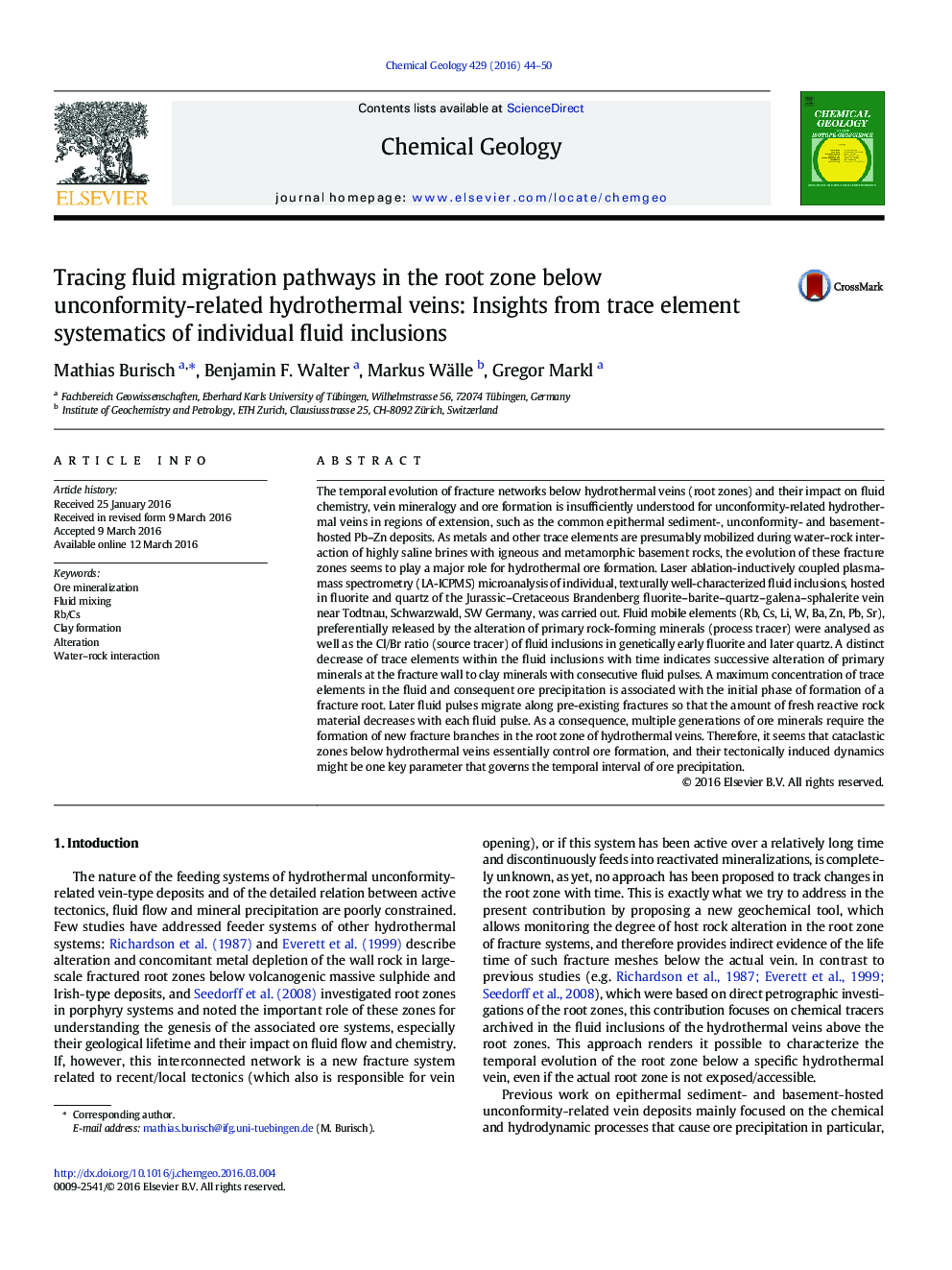| کد مقاله | کد نشریه | سال انتشار | مقاله انگلیسی | نسخه تمام متن |
|---|---|---|---|---|
| 6436105 | 1637545 | 2016 | 7 صفحه PDF | دانلود رایگان |
- Temporarily and spatially resolved LA-ICPMS study of individual fluid inclusions
- Temporal and chemical evolution of fracture root zones below hydrothermal veins
- The evolution of dynamic fracture systems shows distinct cyclicality in their fluid chemistry.
- Ore deposition, primarily occurs at the beginning of these cycles.
- Ore formation is promoted by dynamic fracture systems, in which new fracture branches are established abundantly.
The temporal evolution of fracture networks below hydrothermal veins (root zones) and their impact on fluid chemistry, vein mineralogy and ore formation is insufficiently understood for unconformity-related hydrothermal veins in regions of extension, such as the common epithermal sediment-, unconformity- and basement-hosted Pb-Zn deposits. As metals and other trace elements are presumably mobilized during water-rock interaction of highly saline brines with igneous and metamorphic basement rocks, the evolution of these fracture zones seems to play a major role for hydrothermal ore formation. Laser ablation-inductively coupled plasma-mass spectrometry (LA-ICPMS) microanalysis of individual, texturally well-characterized fluid inclusions, hosted in fluorite and quartz of the Jurassic-Cretaceous Brandenberg fluorite-barite-quartz-galena-sphalerite vein near Todtnau, Schwarzwald, SW Germany, was carried out. Fluid mobile elements (Rb, Cs, Li, W, Ba, Zn, Pb, Sr), preferentially released by the alteration of primary rock-forming minerals (process tracer) were analysed as well as the Cl/Br ratio (source tracer) of fluid inclusions in genetically early fluorite and later quartz. A distinct decrease of trace elements within the fluid inclusions with time indicates successive alteration of primary minerals at the fracture wall to clay minerals with consecutive fluid pulses. A maximum concentration of trace elements in the fluid and consequent ore precipitation is associated with the initial phase of formation of a fracture root. Later fluid pulses migrate along pre-existing fractures so that the amount of fresh reactive rock material decreases with each fluid pulse. As a consequence, multiple generations of ore minerals require the formation of new fracture branches in the root zone of hydrothermal veins. Therefore, it seems that cataclastic zones below hydrothermal veins essentially control ore formation, and their tectonically induced dynamics might be one key parameter that governs the temporal interval of ore precipitation.
Journal: Chemical Geology - Volume 429, 1 July 2016, Pages 44-50
